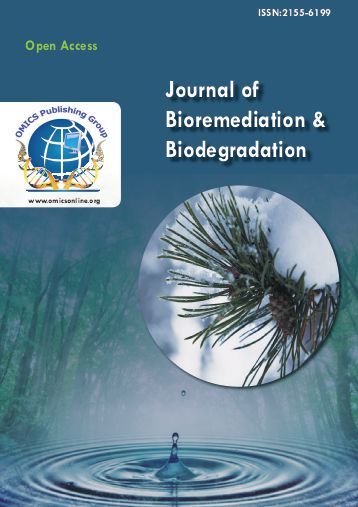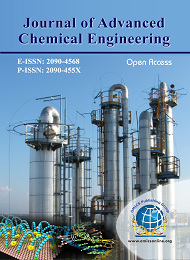Theme: Applications and Characterization of Biopolymers Vs Polymers- A Global Debate
Biopolymers and Bioplastics 2018
Conference Series LLC Ltd invites you to attend the 8th International Conference and Exhibition on Biopolymers and Bioplastics going to be held on October 15-16, 2018 at Las Vegas, USA. The main theme of the conference is “Applications and Characterization of Biopolymers Vs Polymers: A Global Debate”.
Biopolymers and Bioplastics 2018 International Conference is an attempt to explore the various ways to utilize natural resources for betterment of the future, promising a better tomorrow for the progeny and a better vision for the springing research. Bioplastics and Biopolymers conferences is anticipated to be one the best scientific conferences in USA. The scientific sessions of this International Conference on Bioplastics and Biopolymers conferences has been designed on vivacious topics such as Biomaterials and Biopolymers, Green Chemicals, Industrial Biotechnology, Micro and Nano blends based on natural polymers. Biopolymers conferences is consisting of well-organized scientific program and effervescent speeches by the expertise. Conference Series LLC Ltd Organizes 300+ Conferences, 500+ Workshops and 200+ Symposiums Every Year on Pharma, Medicine, Science and Technology across USA, Europe & Asia (conference series) with support from 1000 more scientific societies and Publishes 400+ Open access journals which contains over 30000 eminent personalities, reputed scientists as editorial board members. Conference Series Ltd conferences always encourage the young researchers and students to share their excitement and enthusiasm with world class expertise.
Why to attend???
Biopolymers and Bioplastics-2018 is an event delivering the concept of biobased world across the globe. In the present world where the use of conventional plastics, the consequences of plastic products use and the waste management of these products when they become waste, is a current and pressing issue. Concerns focus on the potential impact of conventional plastics they cause to the environment.
Target Audience:
- Eminent Scientists of biopolymers and bioplastics
- Chemical engineering Research Professors
- Junior/Senior research fellows of biomaterials and bioproducts
- CEO’s of biopolymers companies
- Members of different physics associations of Biopolymers and bioplastics
- Biopolymers doctorates
Details About Biopolymers and Bioplastics Conference 2018:
| Conference Name | Place | Date |
|---|---|---|
| Biopolymers and Bioplastics Conference 2018 | Las Vegas, Nevada, USA | October 15-16, 2018 |
Track 1: Biomaterials and Biopolymers:
Polymer Nano composites (PNC) comprise of a polymer or copolymer having nanoparticles or Nano fillers dispersed in the polymer matrix. Plastic packaging for food & non-food applications is non-biodegradable, and also uses up valuable and insufficient non-renewable resources like petroleum. With the current focus on exploring alternatives to petroleum and prominence on reduced environmental impact, research is increasingly being directed at development of biodegradable food packaging from biopolymer-based materials. A biomaterial is any matter, surface, or construct that interacts with biological systems. As a science, biomaterials are around fifty years old. The study of biomaterials is called biomaterials science. It has experienced stable and strong growth over its history, with many companies investing large amounts of money into the development of novel products. Biomaterials science encompasses elements of medicine, biology, chemistry, tissue engineering and materials science.
Biopolymers conferences | Bioplastics conferences | Biopolymers and Bioplastics conferences | Polymers Conferences
Track 2: Biopolymers and Polymers Applications:
Polymers have properties that make them suitable for use in protecting products from moisture, increasing shelf-life and making products easier to dispense. Every biopolymer has its own material-specific properties, e.g. barrier properties such as oxygen permeability. The barrier properties are relevant to the choice of biopolymers for the packaging of particular products. Bioplastics have very promising prospects for use in pesticide soil pins, for packaging in-flight catering products and for packaging dairy products.
Sugar based biopolymers Applications: Polyalctides decompose harmlessly in the human body and have therefore long been used for medical applications. Examples include surgical implants which do not require operative removal. Until recently, it was not feasible to use polylactides for packaging because of their high price, around US$500 per kilogram.
Cellulose based Biopolymers Applications: Familiar applications of cellophane include packaging for CDS, confectionary and cigarettes. The material is gradually falling out of favour, however, owing to its high price (about US$6 per kilogram). Other cellulose polymer materials (e.g. cellulose ilm) have also been commercially available for many years but are losing market share to newer polymers such as polypropylene.
Synthetic based Biopolymers Applications: The relatively high price of biodegradable polymers of synthetic substances, e.g. aliphatic aromatic copolyesters has prevented them from reaching a large scale market. The best known application is for making substrate mats.
The major advantage of biodegradable packaging is that it can be composted. But the biodegradability of raw materials does not necessarily mean that the product or package made from them (e.g. coated paper) is itself compostable. Biopolymers can also have advantages for waste processing. Coated paper (with e.g. polyethylene) is a major problem product for composting. Although such materials are usually banned from inclusion in organic waste under separate collection schemes, some of them usually end up nonetheless in the mix. The paper decomposes but small scraps of plastic are left over in the compost. The adoption of biopolymers for this purpose would solve the problem.
Biopolymers conferences | Bioplastics conferences | Biopolymers and Bioplastics conferences | Polymers Conferences
Track 3: Future and Scope for Biopolymers and Bioplastics:
In search of novel Advanced Materials solutions and keeping an eye on the goal of sustainable production and consumption, bioplastics have several (potential) benefits. The use of renewable resources to produce bioplastics the key for increasing resource productivity, the resources can be cultivated on an (at least) annual basis, the principle of cascade use, as biomass can primarily be used for materials and then for energy generation, a reduction of the carbon footprint and GHG egressions of some materials and products – saving fossil fuels resources, and for substituting them step by step.
The use of biopolymers could markedly increase as more durable versions are developed, and the cost to manufacture these bio-plastics continues to go fall. Bio-plastics can replace conventional plastics in the field of their applications also and can be used in different sectors such as food packaging, plastic plates, cups, cutlery, plastic storage bags, storage containers or other plastic or composite materials items you are buying and therefore can help in making environment sustainable. Bio-based polymeric materials are closer to the reality of replacing conventional polymers than ever before. Nowadays, biobased polymers are commonly found in many applications from commodity to hi-tech applications due to advancement in biotechnology and public awareness.
- Biopolymers in Drug Delivery
- Biopolymers from Renewable sources
- Biopolymers in Stem Cell Technology
- Ceramics and applications
Biopolymers conferences | Bioplastics conferences | Biopolymers and Bioplastics conferences | Polymers Conferences
Track 4: Green Chemicals: Biopolymers and Bioplastics:
Biopolymers are polymers produced by living organisms in other words, they are polymeric biomolecules. Since they are polymers, biopolymers contain monomeric units that are covalently bonded to form larger structures. Bioplastics are plastics derived from renewable biomass sources, such as vegetable fats and oils, corn starch, pea starch or macrobiotic. Bioplastic can be made from agricultural byproducts and also from used plastic bottles and other containers using microorganisms. Bioplastics can be composed of starches, cellulose, biopolymers, and a variety of other materials. Industrial biotechnology is, as far as possible, based on various renewable raw materials, such as vegetable oils and fatty acids. The challenge is to find suitable microorganisms and enzyme systems which effectively transform the raw materials into useable chemical substances. Global Green Chemicals Market to grow at a CAGR of 8.16 percent over the period 2013-2018, the leather chemicals market size in terms of value is projected to grow at a CAGR of 7.64% between 2014 and 2019 to reach$7,963.65 million by 2019.
Biopolymers conferences | Bioplastics conferences | Biopolymers and Bioplastics conferences | Polymers Conferences
Track 5: Biodegradable Polymers:
Biopolymers are polymers that are biodegradable. The input materials for the production of these polymers may be either renewable (based on agricultural plant or animal products) or synthetic. Current and future developments in biodegradable polymers and renewable input materials focus relate mainly to the scaling-up of production and improvement of product properties. Larger scale production will increase availability and reduce prices. Currently either renewable or synthetic starting materials may be used to produce biodegradable polymers. Two main strategies may be followed in synthesizing a polymer. One is to build up the polymer structure from a monomer by a process of chemical polymerization. The alternative is to take a naturally occurring polymer and chemically modify it to give it the desired properties. A disadvantage of chemical modification is however that the biodegradability of the polymer may be adversely affected. Therefore it is often necessary to seek a compromise between the desired material properties and biodegradability.
Increased use of biopolymers would reduce the dependence on fossil fuels; another advantage is that biopolymers are easily bio-degradable.
Biopolymers conferences | Bioplastics conferences | Biopolymers and Bioplastics conferences | Polymers Conferences
Track 6: Biobased Thermosetting Polymers:
Thermosetting plastics are polymer materials which are liquid or malleable at low temperatures, but which change irreversibly to become hard at high temperatures. A major effort is underway to recognize biobased epoxy resins that can substitute for existing petroleum-based materials such as bis-phenol A diglycidyl ether[C21H24O4] (BADGE). Unfortunately, bis-phenol A (BPA) is particularly problematic as it is differentiated as a reprotoxic R2 substance and an endocrine disruptor. More than 60% of the overall production is used in the coatings industry. Furthermore, epoxies are apparently the most versatile family of adhesives because they are compatible with many substrates, and can be easily modified to attain widely varying properties. Control of properties and also processing is usually based on the selection of the relevant epoxy precursors or combination of monomers, on the selection of curing agents and associated reaction mechanism, and on the inclusion of organic or inorganic fillers and components. Work is underway to develop BPA replacements from various biobased feedstocks’ as well lignin derived chemicals.
Biopolymers conferences | Bioplastics conferences | Biopolymers and Bioplastics conferences | Polymers Conferences
Track 7: Plastic Pollution and Waste Management:
Plastic Pollution involves the aggregation of plastic products in the environment that adversely affects wildlife, wildlife habitat, or human kinds. Plastics that act as pollutants are categorized into micro, meso, or macro debris, based on size. The importance of plastic pollution is correlated with plastics being inexpensive and durable, which lends to high levels of plastics used by human beings. However, it is slow to degrade. Humans are also affected by plastic pollution, such as through the interruption of the thyroid hormone axis or sex hormone levels. Plastic efforts have occurred in some regions in attempts to reduce plastic consumption and pollution and promote plastic recycling.
The use of biodegradable plastics has been shown to have many advantages and disadvantages. Biodegradables are biopolymers that degrade in industrial composters. Biodegradables do not degrade as efficiently in domestic composters, and during this slower process, methane gas may be emitted.
There are also other types of degradable materials that are not considered to be biopolymers, because they are oil-based, similar to other conventional plastics. These plastics are made to be more degradable through the use of different additives, which help them degrade when exposed to UV rays or other physical stressors. However, biodegradation promoting additives for polymers have been shown not to significantly increase biodegradation.
Biopolymers conferences | Bioplastics conferences | Biopolymers and Bioplastics conferences | Polymers Conferences
Track 8: Polymers and Nanotechnology:
The field of Nanotechnology is one of the most popular areas for current research and development in basically all technical disciplines. This obviously includes Polymer Nanotechnology which includes microelectronics (which could now be referred to as nanomaterial). Other areas include polymer-based biomaterials, Nano medicine, Nano emulsion particles; fuel cell electrode polymer bound catalysts, layer-by-layer self-assembled polymer films, electrospun nanofabrication, imprint lithography, polymer blends and Nano composites. Even in the field of Nanocomposites, many diverse topics exist including composite reinforcement, barrier properties, flame resistance, electro-optical properties, cosmetic applications, bactericidal properties.
Nanotechnology is not new to polymer science as prior studies before the ages of Nanotechnology involved Nano scale dimensions but were not specifically referred to as Nanotechnology until recently. Phase separated polymer blends often achieve Nano scale phase dimensions; block copolymer domain morphology is usually at the Nano scale level; asymmetric membranes often have Nano scale void structure, mini emulsion particles In the large field of Nanotechnology, polymer matrix based Nano composites have become a prominent area of current research and development.
Biopolymers conferences | Bioplastics conferences | Biopolymers and Bioplastics conferences | Polymers Conferences
Track 9: Bioplastics:
Bioplastics are plastics derived from renewable biomass sources, such as vegetable fats and oils, corn starch, or microbiota. Bioplastic can be made from agricultural by-products and also from used plastic bottles and other containers using microorganisms. Common plastics, such as fossil-fuel plastics (also called petrobased polymers), are derived from petroleum or natural gas. Production of such plastics tends to require more fossil fuels and to produce more greenhouse gases than the production of biobased polymers (bioplastics). Some, but not all, bioplastics are designed to biodegrade. Biodegradable bioplastics can break down in either anaerobic or aerobic environments, depending on how they are manufactured. Bioplastics can be composed of starches, cellulose, biopolymers, and a variety of other materials.
Biopolymers conferences | Bioplastics conferences | Biopolymers and Bioplastics conferences | Polymers Conferences
Track 10: Biocomposite Materials:
Biocomposites is a composition material formed by a matrix and a reinforcement of natural fibers. Green composite are differentiated as a bio composite combined by natural fibers with biodegradable resins. They are called green composites, majorly because of their degradable and sustainable properties, which can be easily disposed without harming the environment. Because of its durability, green composites are majorly utilized to increase the life cycle of products with short life. A different class of Biocomposites, called hybrid bio composite which is based on different types of fibers into a single matrix. The fibers can be synthetic or natural, and can be randomly combined to generate the hybridization. The worldwide capacity for production of "C" (carbon) fibres was 111, 785 tons in 2012. In 2016 it is set to reach 156,845 tonnes and in 2020, it was set to reach 169,300tonnes. In relation to these nominal capacities, actual production only represents a part, estimated at 60% in 2012, 68% in 2016 and 72% in 2020. Demand was 47,220 t in 2012. It is set to reach 74,740tonnes in 2016 and 102,460tonnes in 2020. This over-capacity could lead to maintaining competitive prices. Hydrocarbons fiber matrix composite materials are made 72 % from epoxy.
Biopolymers conferences | Bioplastics conferences | Biopolymers and Bioplastics conferences | Polymers Conferences
Track 11: Production and Commercialization:
Even though they still account for only a minute share of the plastics market as a whole, bioplastics have become a true alternative to standard plastics manufactured from petrochemical feedstock’s. The term 'bioplastics' is utilized for a wide range of various products with different properties and applications. In its recently published study, Markets and Markets is a market research company and consulting firm based in the U.S. We publish strategically analyzed market reports and serve as a business intelligence partner to Fortune 500 companies across the world. Markets and Markets also provide multi-client reports, company profiles and custom research services. Markets and Markets covers thirteen industry verticals, includes advanced materials, automotive and transportation, banking and financial services, biotechnology, chemicals, energy and power, food and beverages, medical devices, pharmaceuticals, semiconductor and electronics, telecommunications and IT. We at Markets and Markets are inspired to help our clients grow by providing apt business insight with our vast market intelligence repository. The global market for implantable Biopolymers and Bioplastics was worth around $155.7 billion in 2014. This market is expected to grow at a compound annual growth rate of 7.2% between 2014 and 2019 results in $155.7 billion in 2014 and $200.5 billion global market in 2019.
Biopolymers conferences | Bioplastics conferences | Biopolymers and Bioplastics conferences | Polymers Conferences
Biopolymers and Bioplastics 2018
Theme: Applications and Characterization of Biopolymers Vs Polymers: A Global Debate
Summary:
Bioplastics are a form of plastics made entirely or almost entirely from renewable raw materials such as vegetable oil, corn starch and biomass whereas conventional plastics are made from petroleum (oil or gas). Bio-plastics can replace conventional plastics in the field of their applications also and can be used in different sectors such as food packaging, plastic plates, cups, cutlery, plastic storage bags, storage containers or other plastic or composite material items you are buying.
Biopolymers conferences and Bioplastics 2018 is an event delivering the concept of biobased world across the globe. In the present world where the use of conventional plastics, the consequences of plastic products use and the waste management of these products when they become waste, is a current and pressing issue. Concerns focus on the potential impact of conventional plastics they cause to the environment.
For more details please visit: http://biopolymers-bioplastics.conferenceseries.com/
Importance & Scope:
The history of Bioplastics is not a long one. They are beginning to emerge as a result of needing to be more responsible in taking care of the world we live in. Thus, the recent emergence of bio-based products rather than petroleum or natural gas based products. Various reasons are associated with the research and development of Biopolymers and Bioplastics. The use of bio-plastics could markedly increase as more durable versions are developed, and the cost to manufacture these bio-plastics continues to go fall. Bio-plastics can replace conventional plastics in the field of their applications also and can be used in different sectors such as food packaging, plastic plates, cups, cutlery, plastic storage bags, storage containers or other plastic or composite material items you are buying and therefore can help in making environment sustainable.
Biopolymers can be sustainable, carbon neutral and are always renewable, because they are made from plant materials which can be grown indefinitely. These plant materials come from agricultural non food crops. Therefore, the use of biopolymers would create a sustainable industry. In contrast, the feedstocks for polymers derived from petrochemicals will eventually deplete. In addition, biopolymers have the potential to cut carbon emissions and reduce CO2 quantities in the atmosphere: this is because the CO2 released when they degrade can be reabsorbed by crops grown to replace them: this makes them close to carbon neutral. Biopolymers are biodegradable, and some are also compostable. Some biopolymers are biodegradable: they are broken down into CO2 and water by microorganisms. Some of these biodegradable biopolymers are compostable: they can be put into an industrial composting process and will break down by 90% within six months. Biopolymers that do this can be marked with a 'compostable' symbol, under European Standard EN 13432 (2000).Many types of packaging can be made from biopolymers: food trays, blown starch pellets for shipping fragile goods, thin films for wrapping.
Why Las Vegas?
The United States has consistently been the largest producer of plastic and the synthetic plastic market is engrained in the United States and world economy, but now the focus has been shifted to Bioplastics as plastics are having many adverse effects. The bioplastics market is miniscule in comparison to the plastics marketplace; however, bioplastics are gaining in capital and popularity. North America is the biggest market for biopolymers, consuming more than one-third of the total global demand for biopolymers.
Many institutions and departments in United States are encouraging the research for bioplastics. Departments such as Department of Defense (DOD), National Science Foundation (NSF), National Institute of Health (NIH), Department of Health and Human Services (DHHS) , Department of Energy (DOE), Northwestern University, University of Akron etc. are involved in the research for Biopolymers and Bioplastics.
Various companies like Dupont, Cereplast , Metabolix , Natureworks LLC etc. are now a part of USA and their product services are entirely based on Biodegradable Plastics i.e., Bioplastics.
Apart from Research and Industrial point of view, Las Vegas is the most exciting and entertaining city in the world. Nowhere else you can find a city that has all the travel amenities that only a complete resort destination can offer: luxurious casino hotels, fine dining, wonderful live entertainment and state-of-the art convention and trade show facilities... Las Vegas is a spectacular city, incomparable to any other. Everything that you would expect from a world-class metropolis, and more, is right here for your travel pleasure.
Las Vegas tourism offers top quality entertainment, including headliner shows and concerts, attractions, shopping and world-renowned resorts. Las Vegas nightlife will keep you up until dawn and art displays, music and museums take you on a journey from the classic to the contemporary. Downtown Las Vegas offers an energetic display of color with a bit of nostalgia and a glimpse of the future.
Las Vegas continuously reinvents itself, so even if you have been to our great city before you will never run out of fun things to do. You can use the links above to acquire more travel and specific Las Vegas tourist information for unique opportunities and attractions offered to visitors every year.
Why to attend???
Biopolymers and Bioplastics-2018 is an event delivering the concept of biobased world across the globe. In the present world where the use of conventional plastics, the consequences of plastic products use and the waste management of these products when they become waste, is a current and pressing issue. Concerns focus on the potential impact of conventional plastics they cause to the environment.
For more information please visit here
Conference Highlights
- Biomaterials and Biopolymers
- Biopolymers and Polymers Applications
- Green Chemicals: Biopolymers and Bioplastics
- Biodegradable Polymers
- Future and Scope for Biopolymers and Bioplastics
- Plastic Pollution and Waste Management
- Biocomposite Materials
- Polymers and Nanotechnology
- Biobased Thermosetting Polymers
- Production and Commercialization
- Biopolymer Companies and Market
- Bioplastics
To share your views and research, please click here to register for the Conference.
To Collaborate Scientific Professionals around the World
| Conference Date | October 15-16, 2018 | ||
| Sponsors & Exhibitors |
|
||
| Speaker Opportunity Closed | Day 1 | Day 2 | |
| Poster Opportunity Closed | Click Here to View | ||














